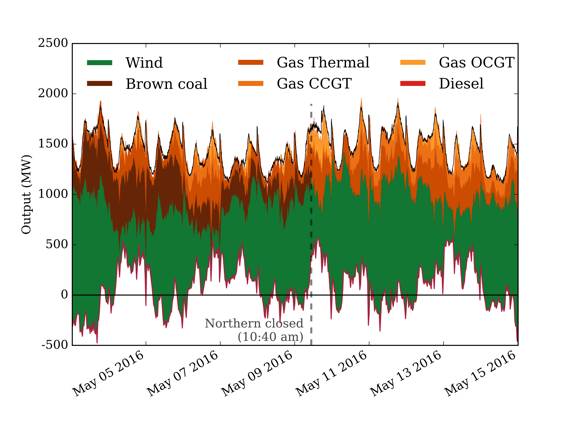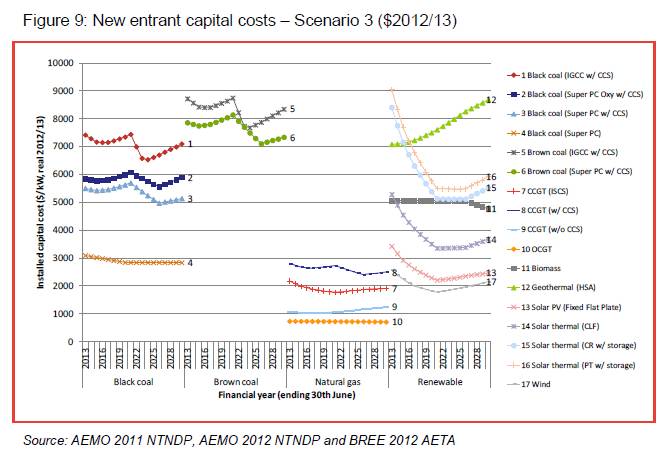|
|
|
There are a number of reasons why nobody should believe the claim that wind
turbines cause illness.
They do cause some
annoyance,
noise problems and loss of sleep in
some cases.
The fear and anxiety toward wind turbines that is instilled in some
people by irresponsible rumour mongers and ill-informed
journalists may lead on to
psychosomatic disorders.
These people are largely to blame for the
epidemic hysteria around
wind farms that we are seeing in some English speaking countries.
- Science:
There is nothing in respectable peer-reviewed
scientific journals indicating
a direct link between wind turbines and ill-health.
In addition to the peer-reviewed literature science depends on rational
argument – the points below show that it is irrational to claim that
turbines cause health problems;
- Cause:
There is no known
mechanism by which turbines could
make people ill.
There are very few things known to science that are undetectable to our
senses yet can
cause us harm
from a distance
– wind turbines produce none of these.
(Levels of infrasound from wind turbines are much
too low to be harmful);
- Dose:
There is little, if any, correspondence between a person's exposure to wind
turbines and their likelihood of reporting symptoms.
The intensity of anything radiating from a wind turbine must decrease with
distance according to the inverse square law of physics.
The claimed illnesses are just as likely to occur at larger distances rather
than smaller: they show no
dose-response correlation, which is
quite counter to the science of epidemiology.
- Selectivity:
The great majority of people are unaffected and
the alleged cases of illness are almost all in people who get no financial
benefit from the wind turbines and in those who started with negative
opinions
about turbines.
Farmers who are receiving lease payments and
wind farm workers hardly ever claim a health problem with turbines.
The 'problems' are almost entirely confined to
English-speaking countries
(because that's where they have had the publicity).
- Symptoms:
While I have no expertise in the field, I believe that the symptoms
associated with wind turbines are those of anxiety-related disorders (see
Opinion from a clinical psychologist);
- Car analogy:
Wind turbines have three main parts: a fan, a gearbox and a generator.
Our cars have the same parts.
Sound levels at all frequencies are much higher in cars than near wind
turbines.
How many of us think that
our cars are making us sick?;
- My own experience:
I have visited many wind farms on many occasions and have even
slept beneath operating wind turbines
five times.
I have never heard sounds from the turbines loud enough to be unpleasant.
I have never felt any ill-effects that might be ascribed to infrasound or
any other emanations from the turbines.
| |
Broadcast 2012/08/02, compere Rosanna Mangiarelli, Channel 7; in regard to
the rejection of planning permission for Stony Gap Wind Farm by the
Goyder Development Assessment Panel.
Nick brings up 'health concerns' in his first statement.
The box on the right gives a very short summary of why no-one should believe
that wind turbines cause illness.
Following the links will provide more information an any of the points.
|
|
|
Ms Mangiarelli should have pointed out to Nick that there is no valid
evidence that wind turbines cause health problems.
Instead, she supported him, showing that she was also ill-informed.
|
|
Then Nick said that the health concerns are "justified on the scientific
evidence" and "that low-frequency noise actually causes health problems".
This is quite false; again, see the box on the right.
Low-frequency noise must be many
times louder than any produced by wind turbines to be harmful to health.
Nick said that wind farms impact on
property values.
A number of surveys have been done into this question, the conclusion is that
while there may be a slight decrease in property values when a wind farm is
proposed and during construction, but no long-term effect.
Nick talked about "worldwide implications".
I suspect he is unaware that in
non English speaking counties there is very
little concern about any connection between wind turbines and ill-health.
It seems that these people have not been told that if they live anywhere near
a wind turbine they should be sick; so they are not sick.
(See the Nocebo effect)
Nick said that "the scientific evidence is that in some cases [the distance
between homes and turbines] needs to be at least 10 kilometres.
Nick, this is just about worth adding to my page that lists the
wind power lies of the month!
The only 'justification' for anything like a 10km set-back comes from
completely unscientific claims of
Sarah Laurie.
Nick said that "Norway and Scandinavian countries" (sic) are putting wind
turbines out to sea because of health concerns.
Again, not true; it is because they have far less suitable land available
than we do in Australia and far higher population densities.
Off-shore turbines cost twice as much as on-shore turbines – I don't
think people want more increases in their power bills.
According to Wikipedia, Denmark (a very small and densely populated
Scandinavian country that has more wind power per capita than any other
nation) has quite a few off-shore wind farms, Sweden has only one wind farm
with more than 10 turbines.
Norway is not mentioned in regard to off-shore turbines and has far more
hydro than wind power.
Nick said that SA has "fantastic geothermal renewable energy potential".
That's true, but no-one has yet managed to get it beyond the pilot plant
stage, while wind power is well proven to be succesful at both
providing power and
reducing greenhouse gas production.
|



